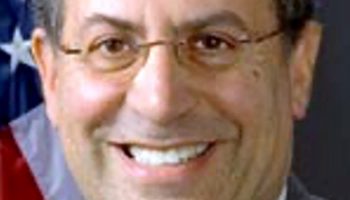 Advancements in science and technology have greatly improved the scientific community’s understanding of the natural world. In the 21st century, new high-tech gadgets are improving the ability of everyday people to understand and experience nature.
Advancements in science and technology have greatly improved the scientific community’s understanding of the natural world. In the 21st century, new high-tech gadgets are improving the ability of everyday people to understand and experience nature.
At Powdermill Nature Reserve in Rector, Pennsylvania, John Wenzel is leading a number of projects to enhance the way people can envision their natural environment, including by creating augmented reality experiences of flowers and 3D models of forests.
Wenzel, who serves as the director of the reserve — which is the Carnegie Museum of Natural History’s environmental research center — will describe the technologies he and his team are developing at 12:15 p.m. today, July 22, in Smith Wilkes Hall at a Bird, Tree & Garden Club Monarch Moments & More lecture.
Wenzel said he has noticed that when people are presented with realistic models of natural things, they are curious and spend time looking at and studying them. But with cartoon, or simplified versions, people quickly lose interest.
“It’s very encouraging,” he said. “Frequently, we feel like we have to dumb things down for people. It looks now that as long as the thing is attractive, more detail is better.”
It is this philosophy that has guided his team’s development of an augmented reality smartphone and tablet application that superimposes a rendering of a plant or flower into the surrounding environment that the smartphone’s camera sees.
Digital artist Maria Harrington, a professor at the University of Florida, developed the realistic, 3D images of the flowers.
The application was designed, in part, for visitors at Powdermill Nature Reserve to use in order to see some of the flowers that bloomed in early spring that they might have missed because it was too cold to hike in the woods.
Wenzel also hopes the app brings attention to some of the plants on the forest floor that are sometimes overlooked.
“When people look at a forest, they tend to admire the trees,” he said. “But, only 10% of the biodiversity is in the trees. Ninety percent of the biodiversity in eastern North America is in the little things on the forest floor. People don’t protect things they aren’t aware of.”
The reserve is also working on creating a 3D model of the forest at Powdermill. Wenzel’s team uses drones to fly over the forest. They fly the drone in the winter to capture all of the tree trunks, and in the summer to capture the tree canopy.
The drone images will likely be used mostly for research, Wenzel said. But, he also envisions it being implemented as an education tool for kids in cities who might not be able to go out and explore the forest.




